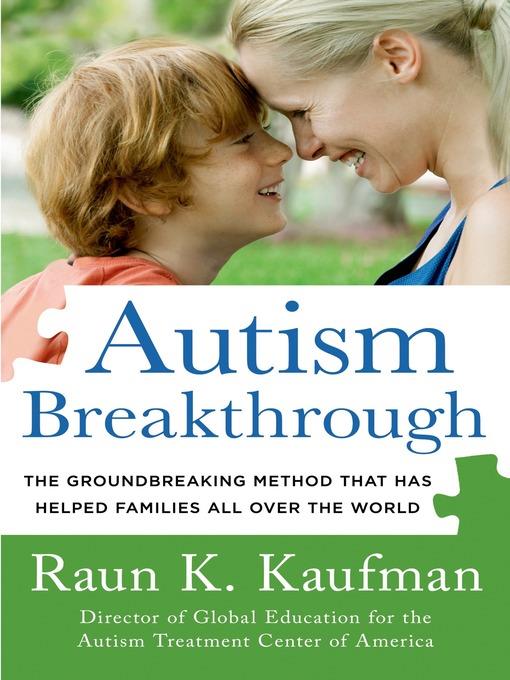
Autism Breakthrough
The Groundbreaking Method That Has Helped Families All Over the World
کتاب های مرتبط
- اطلاعات
- نقد و بررسی
- دیدگاه کاربران
نقد و بررسی

February 17, 2014
Diagnosed as severely autistic, Kaufman was the first to benefit from the Son-Rise program for curing autistic children, developed by his parents, and here offers a practical and upbeat introduction for parents seeking to use the program’s strategies. Now director of global education for the Autism Treatment Center of America, Kaufman explains how the Son-Rise program frames autism as a social-relational disorder, rather than a behavioral disorder, and recommends meeting the child where his own interests lie in order to build a personal bond. His methods for working through four milestones of socialization—nonverbal communication, verbal communication, interactive attention span, and flexibility—offer a helpful road map, with methodology further explained in online supplements to each chapter. He offers an academic paper about empirical research on the program as a nod to skeptical readers, but his chapter espousing nutritional approaches to autism throws him back into the fringe camp. The most appealing aspect of the author’s approach is the limitless hope he offers to discouraged parents: “what your child has done (or not done) up until now tells you nothing about what he can do in the future.” His personal faith in the program, his warmth, and the targeted application of principles will encourage readers to try his methods even if they are undecided about the supporting evidence. Agent: Stephanie Tade, Stephanie Tade Agency.

February 1, 2014
The director of Global Education for the Autism Treatment Center of America chronicles how his parents pioneered a new treatment for autism after receiving a grim prognosis of his condition. In 1974, doctors informed Kaufman's parents that their 1-year-old son was so severely autistic that he ought to be institutionalized. He was unresponsive and transfixed by inanimate objects and repetitive activities. The parents rejected this advice and, fortunately for the author, decided to go it alone, relying instead on their own experiences as professional educators. Kaufman explains their approach. As they saw it, their primary task was to develop a relationship with their son. They spent hours sitting with him, imitating his behavior patterns, including hand flapping and rocking. Gradually, they built a foundation for communication, and their son began to respond. They created games to use as learning experiences, and in just five years, the author writes, he was on the road to full recovery and able to attend school. In 1976, his father, Barry Neil Kaufman (No Regrets: Last Chance for a Father and Son, 2003), wrote Son Rise, the first of his many self-help books. Then the Kaufmans opened the Autism Treatment Center to share their methods. (Their children, including the author, now run the center.) Avoiding the techniques of behavior modification, the methods promoted by the center help parents understand how repetitive behavior patterns give autistic children an illusion of control--autistic children deal with sensory overload by shutting out their environments. The center offers motivational tools and training for parents and caregivers on how to structure an emotionally safe environment in which children can experiment with new social skills. Kaufman includes links to training guides and three appendices. An innovative, alternative approach to creating a child-centered environment that directly empowers parents and caregivers.
COPYRIGHT(2014) Kirkus Reviews, ALL RIGHTS RESERVED.

March 1, 2014
Kaufman (director, Global Education for the Autism Treatment Ctr. of America) has a story to tell and it is a compelling one. Kaufman was diagnosed with autism at 18 months, but his parents defied experts, refused to institutionalize him, and developed an in-home therapy program that they called Son-Rise. Now grown and apparently recovered from autism, the author mingles his own story with the guidance he offers in this book. His voice is warm and fascinating, his experience is one that will bring confidence to families new to their diagnosis, or who may be struggling to find hope. But however heartfelt, this is very much a marketing book--Kaufman is selling the program developed by his parents to other parents, who may not have all the information about current therapy and best practice at hand. Touting anecdote, his own seemingly miraculous recovery, and disparaging other treatment protocols, Kaufman makes an emotionally persuasive case. However, the research cited has questionable relevance to Kaufman's own assertions, and there has been no reliable, independent, peer-reviewed study of the Son-Rise program. Empirically validated methodologies rooted in evidence-based practice, such as Naomi Chedd and Kevin Levine's Treatment Planning for Children with Autism Spectrum Disorders: An Individualized, Problem-Solving Approach, are much more appropriate for most readers. VERDICT Pick up this book with a heavy dose of skepticism, read the irresistible story, and then do your own research.--Victoria Frerichs, Prescot, UK
Copyright 2014 Library Journal, LLC Used with permission.

























دیدگاه کاربران